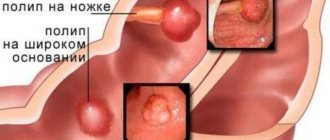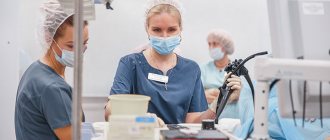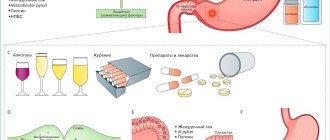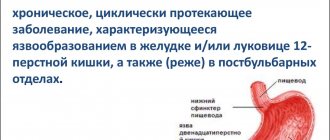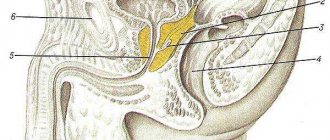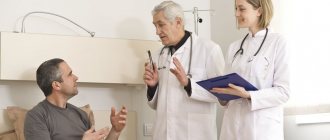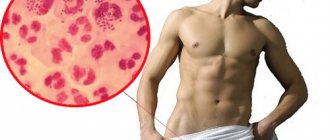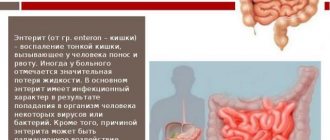A rectal fissure (anal tear) is a defect in the mucous layer of the rectal canal, ranging in size from a few millimeters to 2.5 centimeters. It occurs due to frequent constipation or is a complication of hemorrhoids. Most often, anal tear occurs in women and children. In men, this pathology is detected less frequently.
When the rectal mucosa is damaged, the integrity of small blood vessels and nerve endings is disrupted. Therefore, anal tear is accompanied by pain and bleeding.
Symptoms of the disease
An anal fissure manifests itself very painfully, therefore it causes discomfort and sometimes physical suffering to a person. This is due to the numerous nerve endings in this area of the body. Since the defect does not heal on its own, signs of the disease may appear for years. The main ones:
- traces of blood after defecation;
- pain, burning, tingling during and after bowel movements;
- anal sphincter spasms;
- itching in the anus;
- the presence of a sentinel tubercle (in the chronic form).
As a rule, the symptoms of the disease become more pronounced after consuming spicy foods and alcohol. If the acute form of anal fissure is not treated, the disease becomes chronic and the symptoms decrease somewhat. Against the background of painful manifestations, a person may experience a “fear of stool,” due to which he empties his intestines less often, which makes the stool harder and further aggravates the pathology.
Folk remedies
From pain. Cut something like a candle out of raw potatoes (or lard), dip it in sea buckthorn oil or honey and leave it overnight. The suppository will come out naturally during bowel movements. Course – 10 days.
For constipation. At night, drink a glass of kefir with a tablespoon of vegetable oil added.
From itching and burning . Cold bath with plantain. Add 100–150 ml of plantain decoction to cool water.
From inflammation. Compress with aloe juice. Soak a clean gauze bandage in aloe juice and apply it to the inflamed area for 10–20 minutes. You can also use propolis mixed with butter: 10 g of propolis per 100 g of butter.
Causes and consequences
The etiology of this disease is not fully understood. But it is believed that the main factors contributing to the occurrence of pathology are:
- too hard stool that injures the anal mucosa;
- a sedentary lifestyle, sedentary work and other behavioral characteristics that cause blood stagnation in the perineal area;
- haemorrhoids;
- impaired innervation of the rectum;
- constipation and diarrhea;
- parasitic diseases;
- childbirth;
- lifting weights.
An internal anal fissure requires mandatory treatment by a proctologist. Self-prescription of ointments, suppositories and other medications often turns out to be not only ineffective, but also dangerous, since an untreated disease becomes chronic. In this case, surgery may be necessary to treat it. Possible complications include increased pain, acute paraproctitis, and rectal fistula. In addition, similar symptoms may hide an oncological process.
What will the doctor prescribe?
Since there are many causes of the disease and the treatment is complex, the patient is prescribed:
- Rectal suppositories and ointments that have anti-inflammatory, hemostatic, wound healing and analgesic effects.
- Tablets that improve blood circulation and vascular function.
- 20-minute daily warm sitz baths with chamomile, calendula, St. John's wort, oak bark, yarrow. Warm water helps relieve sphincter spasm, which often occurs with cracks, and also helps eliminate swelling and pain.
In addition, for constipation, various medications are prescribed to ease bowel movements, since as long as constipation persists, treatment will be pointless. You should not take laxatives uncontrollably. For cracks, as a rule, a drug is prescribed from one of three groups:
- agents that increase the volume of intestinal contents (usually they are of plant origin or cellulose-based);
- polyhydric alcohols that do not irritate the intestines (lactulose-based);
- emollients (vaseline and sea buckthorn oils).
The end of stagnation! Getting rid of hemorrhoids Read more
Diagnostic methods
Experts distinguish between posterior and anterior anal fissure. They are diagnosed depending on which side of the anal canal the wound defect is located. To make a diagnosis, a proctologist usually only needs a visual examination of the rectum. In addition, to determine the pathology, a digital examination of the anus, anoscopy and sigmoidoscopy are performed. If the pathological area is bleeding and very painful, anesthesia is used during the examination.
A chronic fissure looks like an ulcer with dense, healed edges. Only a doctor can tell you what to do in this case, since this form of the disease does not respond well to conservative treatment.
Nutrition and diet
To improve the functioning of the gastrointestinal tract, the patient is recommended to follow a therapeutic plant-dairy diet. It is aimed at normalizing the patient’s stool, eliminating periodic constipation, and getting rid of diarrhea.
Fruits and vegetables contain a lot of fiber, which is so necessary for normal digestion. Their use will improve intestinal motility and improve the bowel movement process. Lactic acid products contain lactobacilli, which are responsible for microflora.
The following should be excluded from use:
- spicy dishes;
- marinades and canned foods;
- flour products;
- fried and salty foods;
- alcohol.
A distinctive feature of this diet is that under no circumstances should you give up consuming fats of animal and plant origin. There is an opinion that anal fissures and other problems of a similar nature are more common in those women and men who prefer a “low-fat” diet.
For breakfast, it is recommended to eat a salad of raw vegetables dressed with vegetable oil. Thus, the gastrointestinal tract is activated, and the issue of possible constipation will be eliminated. Throughout the day, patients are advised to increase their consumption of laxative foods. These are boiled beets and carrots, raw apples, dried fruits (prunes and dried apricots).
Read more: diet for hemorrhoids.
How to treat anal fissure?
Acute anal fissure is quite easy to treat. For effective therapy, the doctor prescribes:
- suppositories, ointments with analgesic, antispasmodic and wound-healing effects;
- preparations for softening stool and preventing constipation;
- a high fiber diet;
- painkillers (for severe cramps and pain);
- physiotherapy to eliminate spasms;
- performing physical therapy exercises to activate blood circulation and facilitate the passage of feces through the intestines.
How long an anal fissure takes to heal depends on the correctness of the chosen therapy. For the chronic form of the disease, only surgical methods were previously used. Modern technologies make it possible to abandon radical measures and ensure the elimination of pathology without surgery or hospitalization of the patient.
Treatment
Basic principles:
- In the acute course of anal tear, conservative (drug) therapy is chosen.
- Chronic rectal fissure requires surgical intervention.
- Treatment should be aimed at pain relief, elimination of inflammation and regeneration of the rectal mucosa.
- Be sure to eliminate the symptoms (constipation, diarrhea, spasm of the anal sphincter) that provoke the development of rectal fissures.
- Treatment of concomitant pathological conditions (hemorrhoids, irritable bowel syndrome, Crohn's disease, ulcerative colitis, etc.) that cause exacerbation of anal tear.
Diet
Principles of nutrition
- To normalize stool, it is necessary to include vegetable fiber (vegetables, fruits, cereals) and fermented milk products enriched with beneficial microflora (lacto- and bifidobacteria) in the menu. This will help deal with constipation.
- For rare bowel movements, fish oil and dried fruits (dried apricots, prunes) are useful.
- It is necessary to exclude from the diet foods that injure and irritate the rectal mucosa. It is recommended to avoid spicy, salty, fried, fatty, smoked foods, as well as alcoholic beverages.
- Meals should be fractional (small portions) and frequent (every 2-3 hours). A varied menu is required.
- Abundant drinking regime (up to 1.5-2 liters per day of filtered or bottled water, not boiled). Drink a glass of clean drinking water every day on an empty stomach.
- Eat meat and fish 2 times a week, the main diet is dairy and vegetable.
- Quitting cigarettes. Nicotine has an irritating effect on the body, promotes blood stagnation and venous thrombosis. It is a provocateur of hemorrhoids with rectal fissures.
- Food should improve intestinal motility and digestion. Bran is good for regular bowel movements.
- Diet is extremely important not only at the stage of anti-inflammatory therapy, but also in the postoperative period, when rapid healing of the mucous layer of the rectal canal is necessary.
Products
| Recommended Products | Not recommended products |
Dairy products:
| Dairy and fermented milk products:
|
Vegetables (fresh, boiled, steamed, stewed or baked):
| Vegetables:
|
| Vegetable broths and soups | Fatty and concentrated broths and soups:
|
Porridge on water with a small piece of butter:
| Cereals:
|
| Bran (60 g per day), add a small amount of water |
|
Bread:
|
|
| Durum wheat pasta (small quantity) | Pasta made from premium flour |
Fruits and berries:
Dried fruits:
| Fruits and berries:
|
| Sea kale in the form of a salad or as a side dish for the main dish | Canned products:
Marinades |
Lean meat:
| Fat meat:
|
Low-fat fish:
| Oily fish:
|
Beverages
| Beverages:
|
Vegetable oil:
| |
Semi-finished products:
Sausages | |
Fast food:
|
The diet for rectal fissure is aimed at preventing constipation and regular bowel movements. Properly selected food products prevent the swelling of veins and inflammation of hemorrhoids in the rectal canal. Fermented milk products restore the balance of intestinal microflora and accelerate the healing process of cracks.
Diet is an auxiliary but necessary method of treating anal tear. High-quality nutrition allows you to achieve successful results in conservative therapy and surgery.
Drugs
Drugs for the treatment of rectal fissures should have the following effects:
- anesthesia;
- relieving inflammation;
- elimination of spasm;
- regeneration (healing);
- stopping bleeding;
- relaxation of the chair.
“Proctosan” (suppositories, ointment) is a combination drug. Reduces inflammatory manifestations, eliminates pain, itching, heals anal tear (drying effect) and prevents infection of the mucosal defect. The ointment is applied externally, applied in a small layer in the anus. Internal use is possible using an applicator into the rectal lumen. The suppositories are inserted through the anus into the rectal canal. Both forms of the drug are used twice a day (morning and evening) after defecation and mandatory hygienic procedures for the anus. Treatment for no more than 10 days.
The drug rarely causes side effects. Most often this is allergic intolerance (dermatitis, urticaria). In such cases, after using the dosage form, itching intensifies, swelling and rashes appear. The drug should be discontinued and an alternative replacement should be found.
"Natalsid" (suppositories) is a medicine based on sodium alginate, obtained from seaweed - kelp. It has anti-inflammatory, wound-healing and hemostatic effects. Rarely causes side effects, it is allowed for pregnant and breastfeeding women. For anal tear, use 1 suppository 2 times a day after bowel movements and hygienic toilet of the anus. Treatment is continued for 7-14 days.
"Hepatrombin G" (ointment, suppositories) is an effective drug for the treatment of rectal fissures combined with thrombosis of hemorrhoidal veins. It has anti-inflammatory, analgesic, antithrombotic (promotes the gradual resorption of blood clots and prevents the formation of new ones). Relieves swelling and itching, accelerates the process of tissue regeneration. The drug is contraindicated for people with allergic intolerance and impaired blood clotting.
The ointment is applied externally to the affected areas 2 to 4 times a day, or through an applicator into the lumen of the rectum. Rectal suppositories are inserted into the anus in the morning and evening, 1 piece each. To obtain a visible effect, treatment should be continued for 1-2 weeks.
"Levomekol" (ointment). Effectively heals anal tears and prevents purulent inflammation. The ointment is applied externally to the anus 3-4 times a day.
“Relief” (ointment, suppositories) is a preparation containing shark liver oil.
It has a hemostatic and anti-inflammatory effect, helps the rapid healing of anal tear. Easily eliminates itching and swelling of tissues.
Suppositories are used up to 4 times a day: after hygiene procedures and spontaneous bowel movements. The ointment can be used for external application to areas of inflammation or for rectal administration through an applicator. Prescribed according to the same scheme as suppositories.
For rectal cracks, suppositories with methyluracil , sea buckthorn oil and benzocaine (Anestezol) are good for restoring the mucous membrane and preventing bleeding. They also relieve pain and reduce swelling.
Laxatives for constipation
“Glycerin” (suppositories) is an irritating drug. It has a direct effect on the receptors of the lower intestinal mucosa. Stimulates peristalsis and excretion of feces. The active substance (glycerol) of the drug softens hard stools, bowel movements become painless and regular. The drug does not disrupt the functioning of the digestive tract and is not addictive. Approved in pediatrics. Available in 2 dosages: 1.24 g and 2.11 g of glycerol. Children under 3 years old are prescribed half a suppository (1.24 g) once a day, from 3 to 7 years old - 1 suppository (1.24 g) once a day. Over 7 years of age and adults, 1 suppository (2.11 g) per day is recommended.
The drug is used in the morning, half an hour after breakfast. The candle is inserted into the anus while lying on its side. The laxative effect occurs within 10-15 minutes.
Bisacodyl suppositories have a similar effect
Microlax is a combined laxative drug. Available in the form of tubes with a solution - microenemas. The drug increases the absorption of water in the intestines, dilutes dense stool, and facilitates bowel movements. Emptying occurs within 5-15 minutes after using the drug. The tip of the microenema is inserted completely into the anus (for children under 3 years old - only halfway), after which the contents of the tube are squeezed out. The drug is used once a day. Not used for long-term treatment.
Mild laxatives (prebiotics) in syrups are also effective: Duphalac, Normaze, Lactusan.
Read more: Fast and mild laxatives
Antispasmodics to relieve spasm of the anal sphincter
“No-spa” (tablets) is used to eliminate any spastic conditions of the gastrointestinal tract. Prescribe 1-2 tablets (40-80 mg) 2-3 times a day. For maximum effectiveness, the drug should be taken an hour after eating with a glass of drinking water.
"Duspatalin" (tablets) eliminates increased muscle tone of the digestive tract. Take 1 tablet 3 times a day. When a therapeutic effect is achieved, the dose is gradually reduced.
For severe pain and spasm of the anal sphincter, rectal suppositories with antispasmodics are helpful: Buscopan, Papaverine, Anuzol.
Antidiarrheals
Rectal fissure associated with chronic diarrhea is much less common than with constipation. Frequent loose stools irritate the rectal canal mucosa and contribute to the formation of a defect. To treat an anal tear, it is necessary to eliminate the cause that caused its appearance. Antidiarrheal drugs are prescribed: Imodium, Lopedium, Uzara, Loflatil. To remove toxic substances from the body, enterosorbents are additionally recommended: “Smecta”, “Enterosgel”, “Polysorb”, “Lactofiltrum”.
Read more: Antidiarrheal drugs
Surgery
Conservative treatment helps only with acute rectal fissure or minor inflammation of chronic anal tear. Therapy can be carried out for 2 months. If treatment is ineffective, as well as cicatricial changes in the mucosal defect, spasm of the rectal sphincter, or the presence of complicated hemorrhoids, surgery is required.
Minimally invasive surgery – laser coagulation
It is used for small defects in the rectal mucosa, absence of anal sphincter spasm (20-30% of cases), relapses and complications. The procedure is performed under local anesthesia and does not require a long recovery period.
Progress of the procedure. A surgical speculum is inserted through the anus into the rectal canal, the crack is fixed with a clamp and excised using a laser beam. A fresh wound is formed that heals quickly. The muscle fibers of the anus are not injured, therefore, the possibility of relapse is excluded.
Recovery period. The patient should not get up for an hour. After the procedure, a gauze swab soaked in an antiseptic solution is inserted into the anus. The wound is disinfected every day for a week and after defecation. The surgeon also monitors the patient’s stool, prescribes nutritional therapy and laxatives (if necessary). The patient's condition improves on the 2nd day after laser coagulation. But the wound heals completely after 3-4 weeks.
| Advantages of the method | Disadvantages of the method |
|
|
Laser coagulation is the most acceptable method of treating anal fissure.
Radical surgery - surgery to remove an anal tear
Used after a course of conservative treatment (elimination of pain, spasm, acute inflammation, constipation). The operation is recommended for long-term chronic course of the pathological process, the presence of spasm of the anal sphincter, as well as for significant defects in the rectal mucosa and its scarring.
Progress of the procedure. To access the rectal canal, the anal sphincter muscles are dissected, then the edges of the fissure are excised using a scalpel or radio knife (Surgitron apparatus). The fresh wound is sutured or left without suturing (Gabriel operation). If there is a spasm of the rectal sphincter, the muscles of the anal ring are excised. Sphincterotomy is highly effective (in 90% of cases) in healing rectal fissures. The operation is performed under general anesthesia or local (spinal) anesthesia.
Recovery period. After surgery, daily antiseptic treatment of the wound is carried out, healing medications are prescribed, and constipation is prevented (diet, laxatives). On the first day after surgery, the patient should not get up. In the absence of spontaneous bowel movements, a cleansing enema is prescribed on the 3-4th day. After each bowel movement, the patient needs to wash himself; using regular toilet paper is not recommended.
On the first day after surgery - complete refusal of food, drinking plenty of fluids. Then they begin fractional meals (up to 7 times a day in small portions). A slag-free, salt-free diet is prescribed for 3-5 days. From 3 days onwards, fermented milk products and vegetable fiber are allowed. Recommended dishes include crumbly porridges, vegetables in the form of purees and salads, meat in the form of cutlets or soufflés.
Discharge 7-10 days after surgery.
| Advantages of the method | Disadvantages of the method |
|
|
Folk remedies
To treat anal tear, herbs are actively used in traditional medicine. To improve digestion and reduce inflammatory symptoms, use tea made from chamomile, sage, and St. John's wort.
Herbal decoctions are prepared for local use. A collection of chamomile, sage, oak bark and yarrow copes well with inflammation, bleeding and pain of a rectal fissure. Take 2 tablespoons of each herb, add a liter of boiled water and cook over low heat for about an hour. The resulting broth is filtered through a sieve and poured into a basin, diluted with clean water (2-3 l) to a temperature of 38-39°C. They sit in a basin with a medicinal solution and warm up for 20 minutes. The procedure is recommended to be carried out after spontaneous bowel movements or bowel movements after the introduction of microenemas. Warm baths with a slightly pink (several drops or granules of the product per 2-3 liters of water) solution of potassium permanganate are also effective. Do not use high concentrations of the drug, as this may cause burns.
Herbal decoctions can be used as microenemas. To do this, you need a 50 ml syringe and a warm (37 ° C) medicinal solution: add a glass of boiling water to 2 tablespoons of herbs and cook over low heat for 10 minutes, cool to the desired temperature. The procedure is carried out after bowel movement. The tip of the syringe is lubricated with cosmetic Vaseline and carefully inserted into the anus while lying on its side. Squeeze out the medicinal solution (volume 30-50 ml) and remove it from the anus. You should try to keep the liquid in the rectum for an hour. You can also use the juices of medicinal plants for douching: aloe and Kalanchoe.
You can make herbal candles at home. For this you will need herbs - plantain, motherwort and chamomile flowers. Take 1 teaspoon of raw materials. Then melt 150 g of beeswax, add 3 teaspoons of various herbs to it and stir. The resulting mixture is poured into small molds and placed in the refrigerator to harden. You should get 10 suppositories, which are good for relieving inflammation and itching during anal rupture. Raw materials should only be stored in the refrigerator.
For microenemas, mix aloe juice, liquid fish oil and a raw chicken egg. All ingredients are taken 1 tablespoon at a time and mixed. The mixture is used for douching before bedtime. The minimum course of home treatment is 10 days.
Radio wave therapy
Minimally invasive treatment of anal fissures involves targeted exposure of tissue to high-frequency radio waves. The procedure is carried out using the Surgitron apparatus. Thanks to radio wave radiation, the liquid in pathologically altered cells evaporates, as a result of which they are destroyed. During such an operation, the electrode does not touch the mucous membrane, but acts without contact. The radio pulse is directed exclusively at the crack, so healthy tissue remains untouched. The blood vessels at the treatment site are sealed, which eliminates bleeding and speeds up healing (rehabilitation time is much shorter compared to how long it takes for marks to heal after surgery).
Before the procedure, the patient must cleanse the intestines with an enema. He is then placed on a couch in a comfortable position, anesthesia is administered, and then the doctor removes pathological tissue using a waveguide electrode.
Normalization of stool
If the diet fails to achieve the desired results, it is permissible to use mild laxatives that will not have a harmful effect on either the mother or the baby. These include Fitomucil, Normaze, and food bran.
If you have strained stools, you should use oil microenemas. For the procedure, you can use olive, Vaseline or sunflower oil. The oil is administered in an amount of 50 ml. into the rectum using a syringe. This is an absolutely harmless procedure, so it can be used not only by pregnant women, but even if a woman has an anal fissure after childbirth.
Advantages of the method:
- no incisions and no need for dressings;
- safety and bloodlessness (no risk of infection);
- outpatient implementation (without hospitalization);
- rapid patient recovery;
- no dangerous side effects;
- low price compared to surgery.
Professional performance of the procedure ensures the proper therapeutic effect. In this case, the patient will not experience pain during the recovery period. With traditional operating methods, the wound heals within two weeks or more. Moreover, the process is painful and difficult. Therefore, if there is a choice between classical surgery and the radio wave technique, it is better to give preference to the second option.
Lifestyle change
Patients are advised to give up a sedentary lifestyle. The list of recommendations includes visiting the pool, walking, cycling (allowed only after treatment). People holding positions that do not require activity during the day should get up every half hour or hour, do light exercises, and walk up the stairs.
During the cold season, it is important to dress properly and cover your lower back and buttocks. During frosts, especially women, you need to wear thermal underwear or other warming clothing to prevent inflammation in the pelvis and rectum.
Particular attention should be paid to personal hygiene. After defecation, the best option is to wash the anal area with warm water or use damp toilet paper. It is better to put away traditional paper rolls until the time of recovery.
Prevention
The development of anal fissure can be prevented by following certain preventive measures. The fundamental point in this case is the normalization of diet and lifestyle, which implies:
- refusal of alcohol, spicy food, smoking;
- physical activity (without lifting heavy weights);
- a diet with sufficient fiber content;
- periodic visits to a proctologist (especially after 40 years).
You can learn more about the symptoms and treatment of this disease by contacting the specialists of the Medical On Group - St. Petersburg clinic. Our proctologists use progressive methods of therapy that are minimally invasive and do not require hospitalization of the patient. After the examination, they will tell you how to cure the disease with minimal risks to the body.
Causes of cracks
The following are the main causes of cracks:
- mechanical injuries during pushing, labor, and medical procedures;
- injuries from unconventional sex;
- stagnation of feces in the body;
- entry of otherworldly objects into the anus;
- frequent straining during bowel movements;
- impaired blood supply due to impaired vascular function;
- impaired cellular epithelial maturation;
- abuse of fried foods;
- chemical lesions of soft tissues;
- neuromuscular sphincter injuries;
- inactive lifestyle;
- excessive physical activity, working in a standing position.
Vitamin deficiency and weakened immunity in the patient are also the cause.
Preventive measures
To eliminate the risk of developing symptoms of the disease, preventive methods should be followed:
- Maintain hygiene . Lack of proper hygiene in the anal area often leads to the formation of inflammatory areas and cracks.
- Use comfortable , high-quality underwear.
- Do physical exercise , especially if you need to spend a long time in a sitting position.
- Eat right , include in your daily diet foods that improve the digestion process.
- Eliminate diseases of the digestive system in a timely manner.
If the functioning of the digestive organs is impaired and a person experiences prolonged constipation, it is recommended to use laxatives to prevent damage to the rectal mucosa, for example:
- Guttalax.
- Duphalac.
- Regulax.
- Agiolax.
Guttalax
Duphalac
Regulax
Agiolax
However, if constipation does not disappear for a long time, you should contact a medical facility. Since long-term use of laxatives can have a harmful effect on the natural functioning of the intestines.
What are anal fissures?
The disease is a rupture of the mucous membrane on the surface of the rectum. They can be of different sizes, but always cause significant discomfort to the patient. If a person has chronic hemorrhoids for a long time, then an anal fissure occurs even on the side walls of the canal. 25% of people who consult a proctologist suffer from acute cracks or small tears.
The main reason that causes the development of anal fissures is frequent constipation. In most cases, they lead to the development of hemorrhoids, and this pathology has a more severe course. The following factors can cause problems with the anus:
- Special diets that consist only of low-fat foods.
- Ignoring problems that indicate the development of hemorrhoids.
- Condylomas of the anus.
- During pregnancy, labor is difficult.
- A number of pathologies: AIDS, HIV, syphilis, tuberculosis.
- Anal sex.
- Anal spasms.
- Sedentary or sedentary lifestyle.
Fleming's ointment
The remedy is quite effective for rectal fissures, but only in the initial stages. For more serious problems, it must be used in combination with other wound healing agents.
The drug disinfects well, relieves inflammation and promotes skin regeneration. It is absolutely safe to use by everyone, as the cream is homeopathic and does not cause side effects.
Price
The cost of medicines depends on the volume of the container and the region of sale. You can buy it at a regular pharmacy or order it online. It is recommended to consult a doctor and find out the conditions of use before using the product. The approximate price for medications of this group in Moscow is as follows:
| Name | Place of sale | Prices, rubles |
| Levomekol | "Zdrav RU" | 59 |
| Vishnevsky | "WER.ru" | 39 |
| Proctosan | "ZdravZona" | 318 |
| Solcoseryl | "ZdravZona" | 298 |
| Heparin | "Dialogue" | 31 |
Indications for the use of ointment for anal fissures
It is not necessary to wait for the disease to develop; you can apply the product as soon as discomfort appears. You should use the drug if you experience the following symptoms:
- Pain. The deeper the crack is, the stronger it will be. In the first stages, pain occurs only during bowel movements, but over time it becomes chronic.
- Itching. It also develops over time and becomes stronger, causing a lot of inconvenience to a person.
- Bloody issues. They usually appear at the time of straining and defecation.
In what cases is surgery prescribed?
Most often, treatment of damage to the anal mucosa is carried out with medications.
However, in some cases, surgical intervention is necessary, such cases include:
- for cases where the use of medications did not have the desired effect on the problem;
- the presence of damage to the mucosa, which has scarred edges and cannot disappear on its own;
- for rectal spasms, which does not allow the use of special drugs to treat the disease;
- in the presence of acute cases of hemorrhoids and damage to the anal mucosa.
Before surgery, the patient goes on a special diet for several days, reducing food intake. After the operation, it is recommended to be on a strict diet for several days.
It is contraindicated to carry out these types of interventions in the presence of oncological operations and when the patient is generally unwell. If there is an inflammatory and infectious process in the anus, surgical intervention is postponed until the above problems are eliminated.
Diet for cracks
Dietary measures come down to selecting a table that normalizes bowel regularity. It is also important to exclude fried foods, spices and alcohol (see diet for hemorrhoids and fissures).
For constipation, a contrasting breakfast (a glass of cool juice, after 20 minutes - hot oatmeal), taking a dessert spoon of sunflower or olive oil on an empty stomach, beets in all types, bread with bran, porridge, apples, drinking plenty of fluids (at least 3 liters per day) is useful. and soups at lunch.
Diarrhea requires limiting cabbage, legumes, fresh vegetables and fruits (fiber), yeast baked goods, and whole milk.
When is self-treatment not recommended?
Doctors do not recommend self-treatment of anal fissure without examination by a doctor. Serious mistakes are too costly for the patient. Untimely and incorrect use of medications or refusal of them contributes to the transformation of the fissure into a chronic one, in which conservative methods of therapy are almost excluded, and only surgical intervention is indicated.
Not only complications are important, but also the following:
- probable omission of a similar intestinal pathology;
- bringing your own health to an extremely neglected state, a decline in immunity.
Cases of self-scarring cracks are described in the medical literature. They are possible at a young age, in a person with strong defense mechanisms. The most likely option is severe painful symptoms, which do not exclude the presence of a malignant tumor in the intestine.
An undeniable argument for medical participation in treatment is the inability of the patient himself to understand the causative factors of the disease. Exclusively symptomatic treatment cannot lead to recovery.
Mode of application
You can use the ointment yourself; to enhance the effect, it is recommended to apply it after healing baths. Decoctions of medicinal herbs are good; they help relieve inflammation and relieve pain. Successful treatment when using ointments depends on following a few simple rules:
- Apply the product first to the elbow to check for an allergic reaction. It is better to determine it here than after applying it to the anus.
- Apply the product to cracks in a thin layer, no need to rub in. In some cases, it is recommended to wet the wipes and apply them to the affected area. Sometimes doctors insert tampons to enhance the penetration of the drug into the internal parts of the rectum.
- Before using the medicine, you must perform anal hygiene; the shower should be warm or cool, but not hot.
List of drugs
There are creams and gels that are used to treat the anus. They may contain certain components that help disinfect wounds, promote rapid healing, and reduce pain and itching. These products include the following ointments:
- Heparin;
- Vishnevsky;
- Troxevasin;
- Ultraproct;
- Aurobin;
- Procto-glivenol;
- Hepatrombin;
- Fleming;
- Ichthyol;
- Methyluracil;
- Posterisan;
- Levomekol;
- Proctosan;
- Relief.
